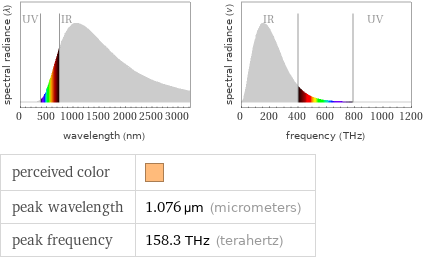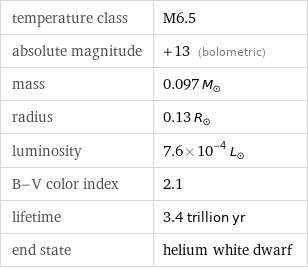Input interpretation

erbium oxide | freezing point
Result

2420 °C (degrees Celsius)
Unit conversions

2693 K (kelvins)

4388 °F (degrees Fahrenheit)

4848 °R (degrees Rankine)

1936 °Ré (degrees Réaumur)

1278 °Rø (degrees Rømer)
Blackbody information

perceived color | peak wavelength | 1.076 µm (micrometers) peak frequency | 158.3 THz (terahertz)
Corresponding main-sequence star properties

temperature class | M6.5 absolute magnitude | +13 (bolometric) mass | 0.097 M_☉ radius | 0.13 R_☉ luminosity | 7.6×10^-4 L_☉ B-V color index | 2.1 lifetime | 3.4 trillion yr end state | helium white dwarf
Examples of M6.5 main-sequence stars

DX Cancri
Corresponding quantities

Thermodynamic energy E from E = kT: | 23 ceV (centielectronvolts)

Blackbody energy flux Φ from Φ = σT^4: | 2.983×10^6 W/m^2 (watts per square meter)

Approximate luminous exitance from a planar blackbody radiator perpendicular to its surface: | 3.636×10^7 lx (lux)